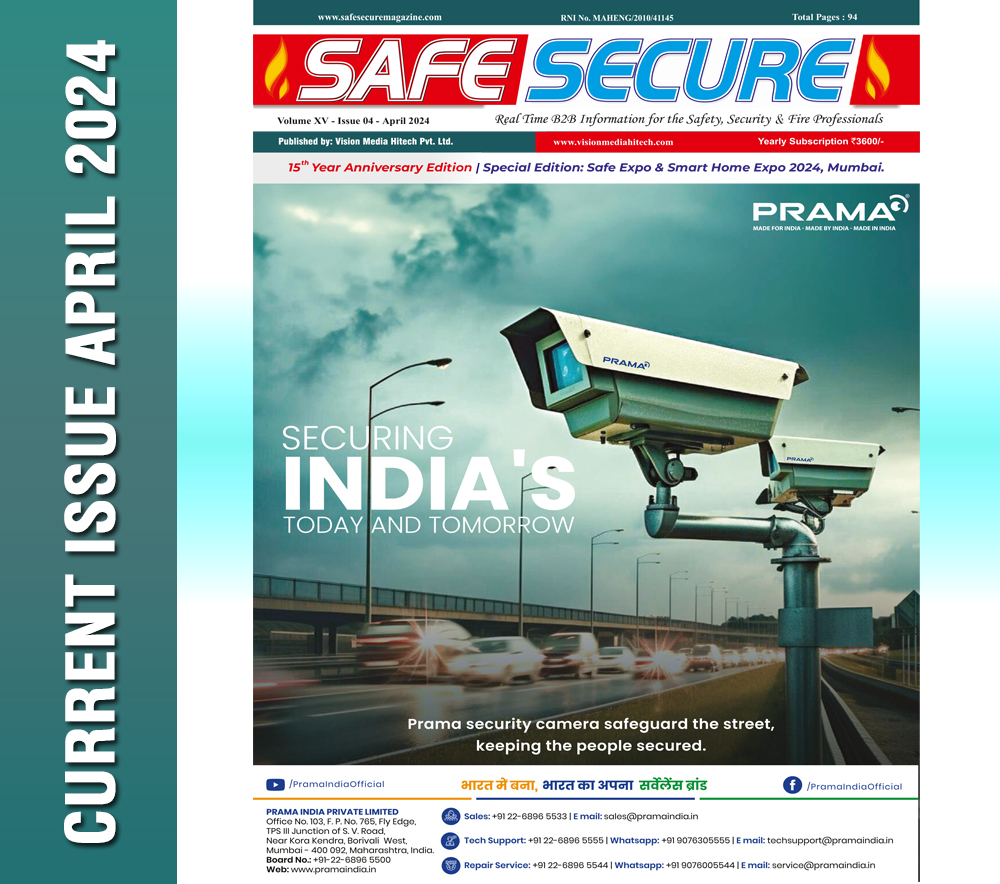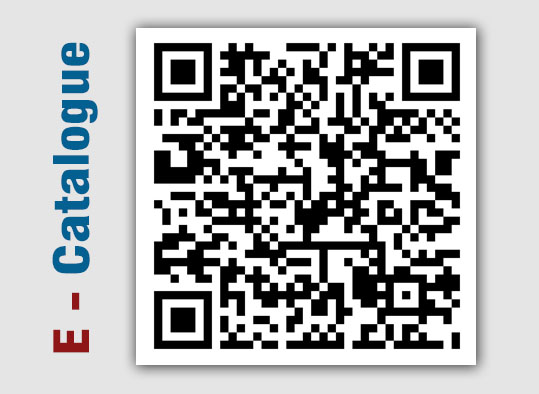EMERGING ROLE OF HARFANMAULA FIREFIGHTERS IN COVID-19

Mr. DK Shami
Fire Adviser to Director General Civil Defence & Fire Ministry of Home Affairs
Natural and Manmade disasters cannot be completely eliminated or prevented but their impact can be minimised by adopting and implementing proper planning and management. Most of the administrators think that Fire Services are only saving life and property in case of fire and fire related accidents. However the ground situation is alarming as in the absence of any organized mechanism at the State level for intervention in non-fire emergencies like, rescuing trapped persons from collapsed buildings, handling chemical emergencies or victims of gas and industrial disasters, drowning cases, rescuing victims of road and rail accidents, etc., Fire Services have been acting as Multi-Hazard Response Services without adequate training, equipment and also, without any legal basis. Recently we have noticed the emerging role of harfanmaula firefighters in covid-19 as performing the role of disinfectant, sanitizer etc.
2.The COVID-19 Pandemic
As per Wikipedia the COVID-19 pandemic, also known as the coronavirus pandemic, is an ongoing pandemic of coronavirus disease 2019 (COVID 19) caused by severe acute respiratory syndrome coronavirus 2 (SARS COV 2). The outbreak was identified in Wuhan, China, in December 2019. The World Health Organization declared the outbreak a Public Health Emergency of International Concern on 30 January, and a pandemic on 11 March. As of 13 May 2020, more than 4.34 million cases of COVID-19 have been reported in over 212 countries and territories, resulting in more than 292,000 deaths. More than 1.60 million people have recovered (Worldometers.info). The virus is primarily spread between people during close contact, often via small droplets produced by coughing, sneezing, and talking. The droplets usually fall to the ground or onto surfaces rather than remaining in the air over long distances. People may also become infected by touching a contaminated surface and then touching their face. On surfaces, the amount of virus declines over time until it is insufficient to remain infectious, but it may be detected for hours or days. It is most contagious during the first three days after the onset of symptoms, although spread may be possible before symptoms appear and in later stages of the disease.
Common symptoms include fever, cough, fatigue, shortness of breath, and loss of smell. Complications may include pneumonia and acute respiratory distress syndrome. The time from exposure to onset of symptoms is typically around five days, but may range from two to fourteen days. There is no known vaccine or specific antiviral treatment. Primary treatment is symptomatic and supportive therapy. Recommended preventive measures include hand washing, covering one's mouth when coughing, maintaining distance from other people, wearing a face mask in public settings, and monitoring and self-isolation for people who suspect they are infected. Authorities worldwide have responded by implementing travel restrictions, lockdowns, workplace hazard controls, and facility closures. Many places have also worked to increase testing capacity and trace contacts of infected persons.
3.Guidelines and Instructions Issued by Government of India:
Government of India, Ministry of Health and Family Welfare, Directorate General of Health Services had issued various guidelines on Novel Coronavirus Disease (COVID-19) including the guidelines on rational use of PPE (Appendix-B). These Guidelines and Instructions are available on website of Health Ministry.
4.Why Firefighter should know about COVID-19
Fire service departments of States/UT's/PSU's have been engaged in sanitization/disinfection work of very large area besides the specific buildings. Few of them are engaged even without providing proper safety kits. Therefore they are at a very large risk of catching the infections. Do they need more specific guidelines and SOPs as they are handling the situation with different prospective? Most of the fire service organisations of repute have issued the guidelines/SOP's regarding do and don't by the first responders. The brief of same is given below:
• Personal Protective Equipment :
Beware of fraudulent PPE. N95 or higher level respirator should be used instead of a facemask when firefighters are performing or present for an aerosol-generating procedure. In addition a single pair of disposable examination gloves, Eye protection, such as face shield or goggles, Gown or coveralls should also be used. Personal protective clothing (e.g., uniforms) or other porous materials should also be de-contaminated. If PPE becomes contaminated discard and replace it and if reusing, disinfect and store properly.
FIRE & RESCUE Fire/Water/Rescue Tenders/EMS vehicles: Use hospital-grade disinfectants to disinfect non porous surfaces of Water Tenders, ambulances, clipboards, radios, and other frequently touched surfaces or equipment. When cleaning the vehicle should wear a disposable gown and gloves. A face shield or facemask and goggles should also be worn if splashes or sprays during cleaning are anticipated.
Use alcohol-based hand sanitizers with greater than 60% ethanol or 70% isopropanol, or wash hands with soap and water for at least 20 seconds when soap and water are available. Avoid touching eyes, nose, and mouth.
Encourage sick employees to stay home. Employees should not return to work until the isolation periods are met, in consultation with hospitals.
Refresher training should be conducted for firefighters on proper donning, doffing, and maintenance of all PPE. All PPE should be accessible to responders when needed. Cloth face coverings are not considered PPE but can be used for source control.
5. Details of disinfectant being used by Firefighters in India:
Government of India had issued guidelines for disinfection of common public places including offices. The Fire and Emergency Services has taken up the task of disinfecting public places, hospitals and other places. They are using following chemicals:
i. Hypochlorous Acid (HoCl): safe concentration 100ppm or less (0.01%)
ii. Hydrogen peroxide (H2O2): safe concentration
1% or less iii. Sodium Hypochlorite (NaoCl): safe concentration
500ppm or less (0.05%)
6. Situation in India:
Firefighters from approximately 4000 fire stations in India have disinfected public places across the country by using the Water tenders with mist technology. Sodium hypochlorite mixed with water is being used as the disinfectant solution for cleaning public places.
7. International Situations:
In United Kingdom Firefighters are now permitted to:
• Assist ambulance services in some specified activities and drive ambulances;
• Deliver food and medicines to vulnerable people;
• In the case of mass casualties due to COVID-19, move dead bodies;
• Assist in face fitting masks to be used by frontline NHS staff and clinical care staff working with COVID-19 patients;
• Deliver PPE and other medical supplies to NHS and care facilities;
• Assist in taking samples for Covid-19 antigen testing;
• Drive ambulance transport not on blue-lights (excluding known Covid-19 patients) to outpatient appointments or to receive urgent care;
• Provide instruction for non-Service personnel to drive ambulances (not on blue-lights);
• Assemble single-use face shields for NHS and care staff; Packaging and repackaging food supplies for vulnerable people
• Transfer known or suspected COVID-19 patients to and from Nightingale hospitals;
• Transfer non-COVID-19 patients to and from Nightingale hospitals.
The new areas of work above are covered in the national tripartite agreement made between the Fire Brigades Union, NJC Fire Service employers and the National Fire Chiefs Council (NFCC). With around 3,000 fire service staff currently in self-isolation, many of whom will not have the virus, services could struggle to maintain staffing levels as the pandemic progresses. Fire and rescue staff is key workers and will, in most cases, be expected to continue going to work - so long as they do not live with anyone who has symptoms, or are displaying symptoms themselves.
Public Health England has published guidance for first responders and others in close contact with symptomatic people with potential COVID-19. Public Health England has also published guidance on when to use surgical face mask or FFP3 respirator. The guidance underlines the importance of having respiratory protection when conducting aerosol generating procedures. In the fire service an example of this would be incident-ground oxygen therapy equipment. These procedures can, or rather, are likely to produce airborne droplets which will carry the virus. For these reasons eye protection should also be worn when aerosol generating procedures are used on a casualty by firefighters. The most logical step for firefighters, who have access to it as a matter of course, is for breathing apparatus to be worn as this provides complete protection to our eyes, airways, and face. Fire and rescue services should have in place external laundry services, and appropriate arrangements for the cleaning of stations as well as disposal facilities and processes for the safe disposal of clinical waste. Arrangements made by fire and rescue services should conform to the highest possible standards and these standards should be as close as possible to those required and practised by health providers who come into contact with Covid-19 carriers and sufferers. Breathing apparatus (BA) tests are essential to protect firefighters, particularly in the context of the pandemic, as they may be used as PPE in some cases. Normal health and safety structures should still be in place. BA cleaning routines should not be altered without consultation with the FBU. There is no reason for fire service management to alter these arrangements.
The National Fire Protection Association (NFPA) offers the following standards, codes, and resources and to assist in prevention, mitigation, preparedness, response, and recovery.
•
• NFPA 1600®, Standard on Continuity, Emergency, and Crisis Management is the recognized National Preparedness Standard®,
offering vital information on conducting risk assessments, business impact analysis, capabilities, needs assessments, and
developing emergency and recovery plans for myriad events including pandemic.
• NFPA 1999, Standard on Protective Clothing and Ensembles for Emergency Medical Operations provides requirements for the clothing
and certain respiratory devices used by on-scene first responders as well as by first receiver health care workers at facilities where
treatment will be rendered.
• NFPA 1581, Standard on Fire Department Infection Control Program provides the minimum requirements for infection control
programs to help identify and limit the potential of an infectious exposure to fire department members as well as other first
responders during the performance of their assigned duties and within the responder working and living environment.
• NEPA 99, Health Care Facilities Code offers healthcare decision-makers essential safety information and requirements for emergency
planning, isolation spaces, infection control, IT and data infrastructure, and many other relevant topics.
• Tip Sheet - NFPA 1581: Infection Control Program Resource for First Responders
• Emergency Preparedness Checklist
• Organizational Planning Tips for Pandemic Preparedness
• Temporary Compliance Options for Code Modifications, Alternate Care Sites, and Facilities Related to Health Care
• Maintaining Safe Health Care Facilities in Extraordinary Times
8. Financial Assistance Provided by GOI
Government of India vide letter no. 33-4/2020-NDM-1 dated
14.03.2020 has partially modified list of items and norms of assistance for containment of COVID-19 Virus in India and allowed States to book the expenditure on equipment not exceeding 10% of the annual allocation of State Disaster Response Funds towards the cost of personal protection equipment for fire authorities.
9. Financial Assistance Provided by USA
FEMA makes additional $100 million available to fire/EMS for COVID-19 response in supplemental funding for personal protective equipment (PPE) and related supplies to the fire service community to prevent, prepare for, and respond to the COVID-19 pandemic. The funding is part of the Coronavirus Aid Relief and Economic Security (CARES) Act through the Assistance for Firefighters Grant Program.
10. Support of NGO's in India:
Many NGO's, /associations and trade bodies have been actively participating in the fight against Covid-19 pandemic. Some of such bodies are FSAI (Fire & Security Association of India), ISHRAE, IPA, GEMs Council of ASSOCHAM etc. The initiatives taken by them is as under:
1. Forming high level committees and task forces comprising of our embers who are luminary experts in their spective domains.
2. Bringing out white papers in their respective fields on technologies that help in fighting the spread of COVID-19. Some of the fields
covered are.
a. Transforming and taking help from Firefighting equipment specially by using them in sanitization and disinfection.
b. How to use air-conditioning and ventilation to minimize the spread of COVID-19 c. How to maintain Plumbing systems to
reduce contamination in buildings
3. Proposing guidelines to operate workplaces with minimum risk of spreading contamination etc.
4. Designing various disinfection and Sanitization systems so that they can be using locally available materials and producing them
at the lowest cost.
5. Suggesting the right concentration of disinfectant and spray mechanics for sanitization.
6. Free distribution of equipment trolley mounted disinfection systems to municipal corporations
7. Free distribution of Sanitization chambers to Police and Govt agencies
8. Free distribution of Backpack spraying systems to hospitals
9. Free distribution of PPE and mask to various municipal and health Centers.
FAQ COVID-19-MOHFW.GOV.IN Detail Question and Answers on COVID-19 for Public
1) What is corona virus
2) What is COVID-19
3) What are the symptoms of COVID-19
4) How does COVID-19 spread
5) Can the virus that causes COVID-19 be transmitted through the air?
6) Can COVID-19 be caught from a person who has no symptoms?
7) Can I catch COVID-19 from the feces of someone with the disease?
8) What can I do to protect myself and prevent the spread of disease Protection measures for everyone
9) Protection measures for persons who are in or have recently visited (past 14 days) areas where COVID-19 is spreading
10) How likely am I to catch COVID-19?
11) Should I worry about COVID-19?
12) Who is at risk of developing severe illness
13) Are antibiotics effective in preventing or treating the COVID-19?
14) Are there any medicines or therapies that can prevent or cure COVID-19
15) Is there a vaccine drug or treatment for COVID-19
16) Is COVID-19 the same as SARS?
17) Should I wear mask to protect myself
18) How to put on use take off and dispose of a mask?
19) How long is the incubation period for COVID-19?
20) Can humans become infected with the COVID-19 from an animal source?
21) Can I catch COVID-19 from my pet?
22) How long does the virus survive on surfaces?
23) Is it safe to receive a package from any area where COVID 19 has been reported?
24) Is there anything I should not do?
In any case, if you have fever, cough and difficulty breathing seek medical care early to reduce the risk of developing a more severe infection and be sure to share your recent travel history with your health care provider.
Answer to all above questions can download from MOHFW.
Appendix-"B"
About this guideline : This guideline is for health care workers and others working in points of entries (POEs), quarantine centers, hospital, laboratory and primary health care / community settings. The guideline uses setting approach to guide on the type of personal protective equipment to be used in different settings.
Introduction: Coronaviruses are a large family of viruses, some causing illness in people and others that circulate among animals, including camels, cats and bats. Rarely, animal coronaviruses can evolve and infect people and then spread between people such as has been seen with MERS and SARS. The outbreak of Novel coronavirus disease (now named COVID-19) was initially noticed from a seafood market in Wuhan city in Hubei Province of China in mid-December, 2019, has spread to more than 185 countries/territories worldwide including India. The causative agent for COVID-19, earlier termed provisionally as novel Coronavirus has been officially named as SARS-CoV-2.
Mode of transmission: There is clear evidence of human to-human transmission of SARS-CoV-2. It is thought to be transmitted mainly through respiratory droplets that get generated when people cough, sneeze, or exhale. SARS COV-2 also gets transmitted by touching, by direct touch and through contaminated surfaces or objects and then touching their own mouth, nose, or possibly their eyes. Healthcare associated infection by SARS-COV-2 virus has been documented among healthcare workers in many countries. The people most at risk of COVID-19 infection are those who are in close contact with a suspect/confirmed COVID-19 patient or who care for such patients.
Personal Protective Equipment (PPE): Personal Protective Equipments (PPEs) are protective gears designed to safeguard the health of workers by minimizing the exposure to a biological agent.
Components of PPE: Components of PPE are goggles, face-shield, mask, gloves, coverall/gowns (with or without aprons), head cover and shoe cover. Each component and rationale for its use is given in the following paragraphs:
Face shield and goggles: Contamination of mucous membranes of the eyes, nose and mouth is likely in a scenario of droplets generated by cough, sneeze of an infected person or during aerosol generating procedures carried out in a clinical setting. Inadvertently touching the eyes/nose/ mouth with a contaminated hand is another likely scenario. Hence protection of the mucous membranes of the eyes/nose/mouth by using face shields/ goggles is an integral part of standard and contact precautions. The flexible frame of goggles should provide good seal with the skin of the face, covering the eyes and the surrounding areas and even accommodating for prescription glasses.
Masks: Respiratory viruses that includes Coronaviruses target mainly the upper and lower respiratory tracts. Hence protecting the airway from the particulate matter generated by droplets / aerosols prevents human infection. Contamination of mucous membranes of the mouth and nose by infective droplets or through a contaminated hand also allows the virus to enter the host. Hence the droplet precautions/airborne precautions using masks are crucial while dealing with a suspect or confirmed case of COVID-19/performing aerosol generating procedures.
Masks are of different types: The type of mask to be used is related to particular risk profile of the category of personnel and his/her work. There are two types of masks which are recommended for various categories of personnel working in hospital or community settings, depending upon the work environment: Triple layer medical mask, N-95 Respirator mask.
Triple layer medical mask: A triple layer medical mask is a disposable mask, fluid-resistant, provide protection to the wearer from droplets of infectious material emitted during coughing/sneezing/talking.
N-95 Respirator mask: An N-95 respirator mask is a respiratory protective device with high filtration efficiency to airborne particles. To provide the requisite air seal to the wearer, such masks are designed to achieve a very close facial fit. Such mask should have high fluid resistance, good breathability (preferably with an expiratory valve), clearly identifiable internal and external faces, duckbill/cup shaped structured design that does not collapse against the mouth. If correctly worn, the filtration capacity of these masks exceeds those of triple layer medical masks. Since these provide a much tighter air seal than triple layer medical masks, they are designed to protect the wearer from inhaling airborne particles.
Gloves: When a person touches an object/surface contaminated by COVID-19 infected person, and then touches his own eyes, nose, or mouth, he may get exposed to the virus. Although this is not thought to be a predominant mode of transmission, care should be exercised while handling objects/surface potentially contaminated by suspect/ confirmed cases of COVID-19. Nitrile gloves are preferred over latex gloves because they resist chemicals, including certain disinfectants such as chlorine. There is a high rate of allergies to latex and contact allergic dermatitis among health workers. However, if nitrile gloves are not available, latex gloves can be used. Nonpowdered gloves are preferred to powdered gloves.
Coverall/Gowns: Coverall/gowns are designed to protect torso of healthcare providers from exposure to virus. Although coveralls typically provide 360-degree protection because they are designed to cover the whole body, including back and lower legs and sometimes head and feet as well, the design of medical/isolation gowns do not provide continuous whole-body protection (e.g., possible openings in the back, coverage to the mid-calf only). By using appropriate protective clothing, it is possible to create a barrier to eliminate or reduce contact and droplet exposure, both known to transmit COVID-19, thus protecting healthcare workers working in close proximity (within 1 meter) of suspect / confirmed COVID-19 cases or their secretions. Coveralls and gowns are deemed equally acceptable as there is a lack of comparative evidence to show whether one is more effective than the other in reducing transmission to health workers. Gowns are considerably easier to put on and for removal. An apron can also be worn over the gown for the entire time the health worker is in the treatment area. Coveralls/gowns have stringent standards that extend from preventing exposure to biologically contaminated solid particles to protecting from chemical hazards.
Shoe covers: Shoe covers should be made up of impermeable fabric to be used over shoes to facilitate personal protection and decontamination.
Head covers : Coveralls usually cover the head. Those using gowns, should use a head cover that covers the head and neck while providing clinical care for patients. Hair and hair extensions should fit inside the head cover. Rational use of PPE
The PPEs are to be used based on the risk profile of the health care worker. The document describes the PPEs to be used in different settings.
(Download from MoHFW)
Points to remember while using PPE
1. PPEs are not alternative to basic preventive public health measures such as hand hygiene, respiratory etiquettes which must be
followed at all times.
2. Always (if possible) maintain a distance of at least 1 meter from contacts/suspect/confirmed COVID-19 cases
3. Always follow the laid own protocol for disposing off PPEs as detailed in infection prevention and control guideline
available on website of MOHFW.












